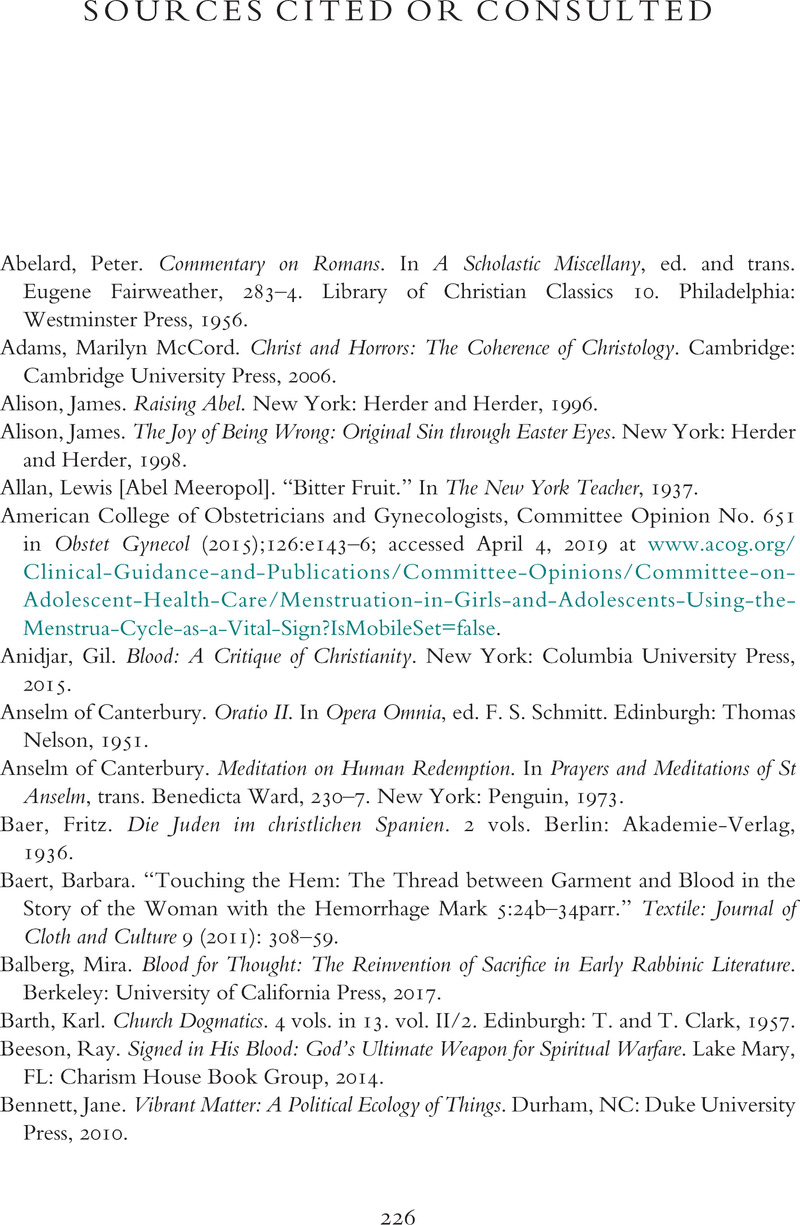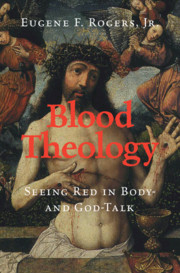Book contents
- Blood Theology
- Reviews
- Blood Theology
- Copyright page
- Dedication
- Contents
- Acknowledgments
- Part I Why We See Red
- Part II Blood Seeps in Where It Hardly Seems to Belong
- Part III Blood Makes a Language in Which to Conduct Disputes
- Part IV The Blood of God at the Heart of Things
- Appendix Review of Gil Anidjar’s Blood: A Critique of Christianity
- Sources Cited or Consulted
- Scripture Index
- Subject Index
- References
Sources Cited or Consulted
Published online by Cambridge University Press: 22 March 2021
- Blood Theology
- Reviews
- Blood Theology
- Copyright page
- Dedication
- Contents
- Acknowledgments
- Part I Why We See Red
- Part II Blood Seeps in Where It Hardly Seems to Belong
- Part III Blood Makes a Language in Which to Conduct Disputes
- Part IV The Blood of God at the Heart of Things
- Appendix Review of Gil Anidjar’s Blood: A Critique of Christianity
- Sources Cited or Consulted
- Scripture Index
- Subject Index
- References
Summary

- Type
- Chapter
- Information
- Blood TheologySeeing Red in Body- and God-Talk, pp. 226 - 236Publisher: Cambridge University PressPrint publication year: 2021

